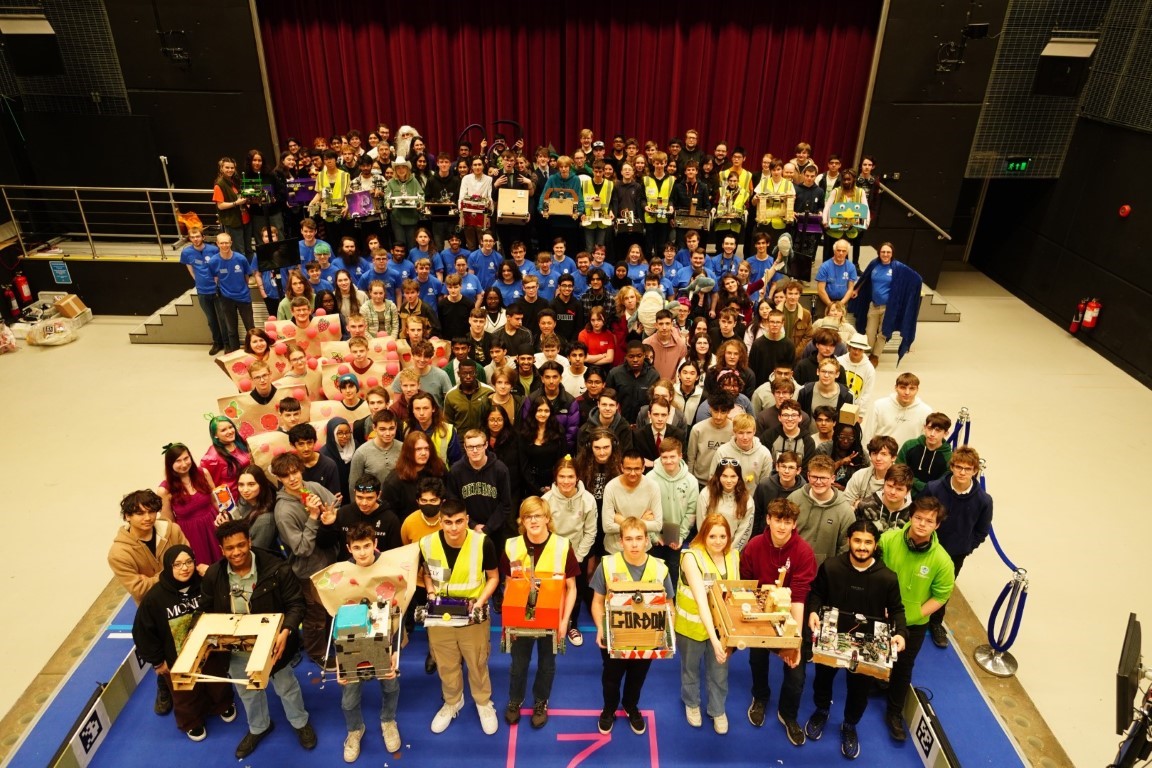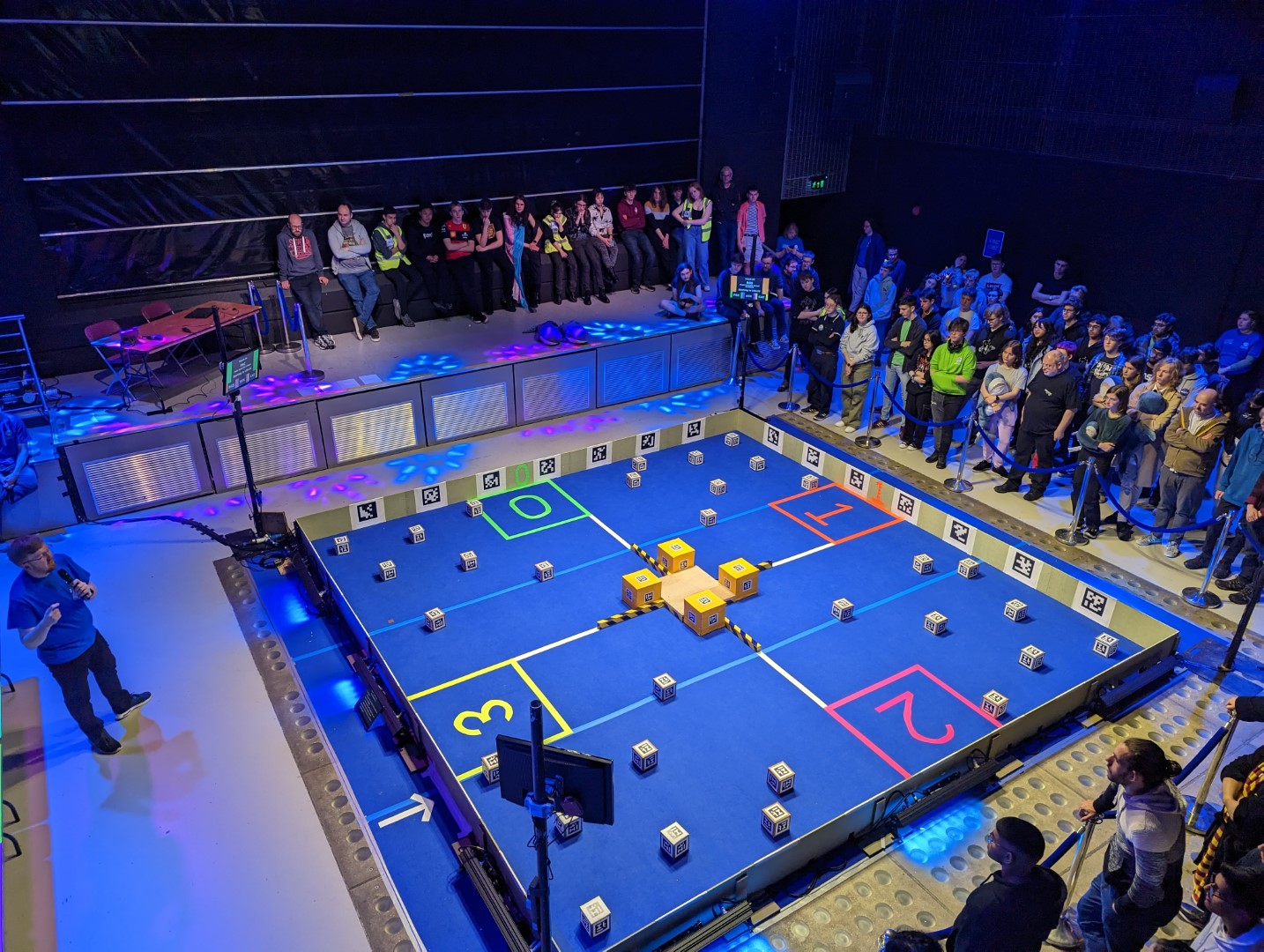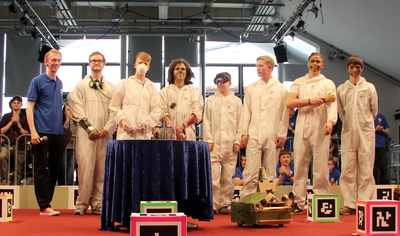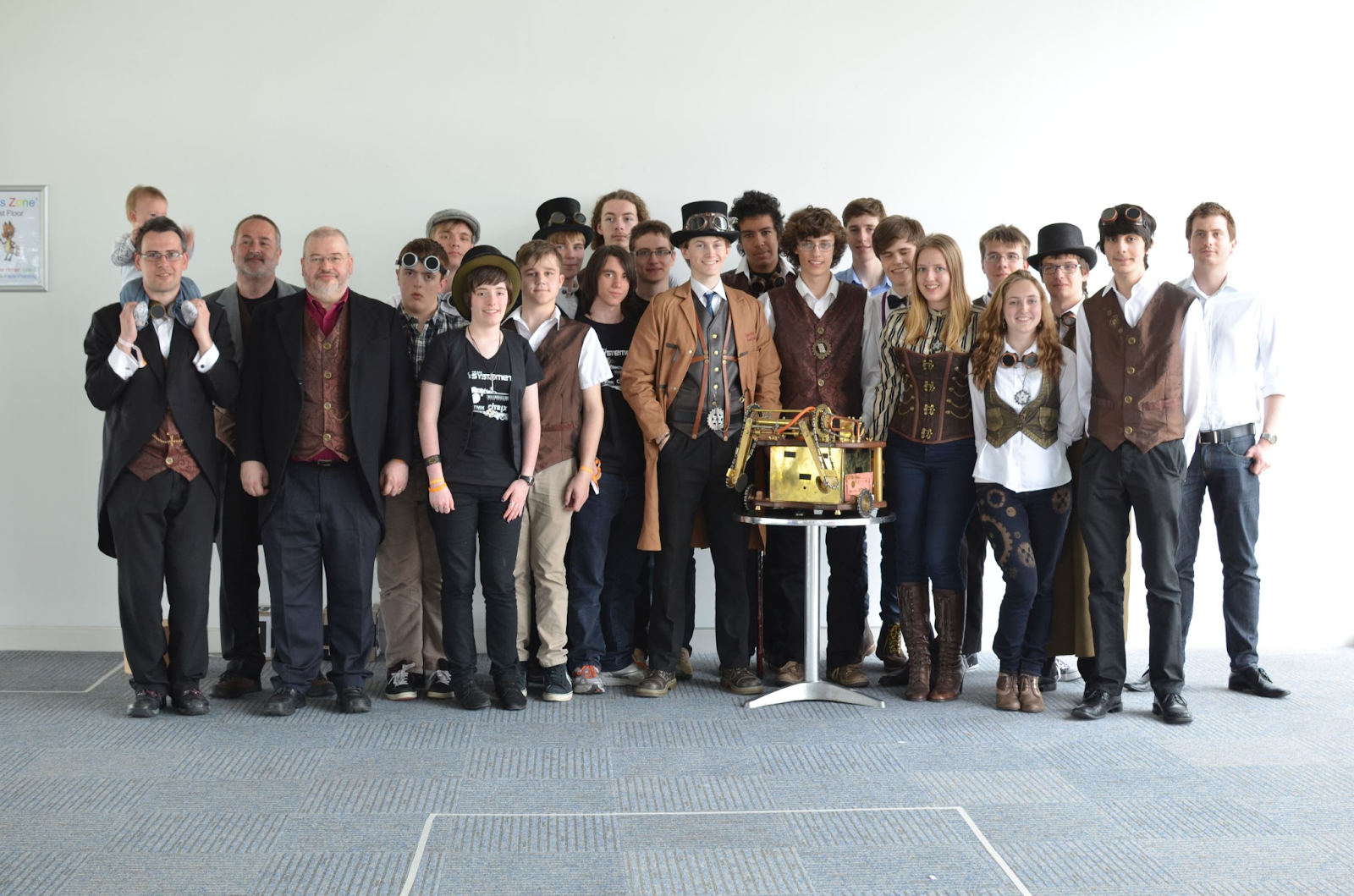
That’s a wrap on Student Robotics 2023! Haberdashers’ School came 1st amongst all of our competitors, after coming up against Abingdon School, Gymnasium Markt Indersdorf, and Harris Westminster Sixth Form in the finals. Our teams worked incredibly hard on their robots this year, and it showed in their performance in each round.
The game: Greed

Greed required our team’s robots to capture tokens from their opponents and place them in their scoring zone. With Bronze, Silver, and Gold tokens, each worth a different number of game points, teams had to think carefully about their optimum strategy.
To help teams locate the tokens there were 2D barcode style markers attached that our computer vision library could detect. However, each of the markers identified themselves as exactly the same, so teams had to use other sensors to detect which type of token is which. Bronze and Silver tokens were the same size but the Silver tokens weighed 300g more, and Gold tokens were larger than both Bronze and Silver. Teams were scored at the end of the match for collecting the most points.
Virtual Competition
The first part of our league this year was a virtual competition, broadcast live from Southampton in March. Across twenty matches, teams competed in a simulated version of the main competition, testing their coding skills against one another. The day was handily won by Haberdashers’ College, coming 1st in all four of their matches.
League Matches
At the in person event, teams participated in a further 70 league matches, showcasing a diverse range of robot designs and strategies. The robots displayed impressive agility, precision, and ingenuity, as they navigated the arena to capture tokens and outmanoeuvre their opponents. Team’s had varying designs from suction systems, lifting mechanisms, and even a flywheel designed to launch tokens.
Knockouts
The knockout rounds saw teams from the league matches pitted against one another in intense, high-stakes battles. With each round, the competition grew fiercer, and the robots were pushed to their limits as they raced to collect tokens and secure their place in the finals.
The Final

In the nail-biting final, Haberdashers’ School faced off against Abingdon School, Gymnasium Markt Indersdorf, and Harris Westminster Sixth Form. Harris Westminster Sixth Form managed to successfully grab Haberdashers’ gold token, but were not able to get it solely back to their own scoring zone. Whilst this was happening, Gymnasium Markt Indersdorf tried to grab a gold token with their arms, but missed slightly and instead grabbed the Abingdon School robot, slowly pulling on the robot and some of its wires for the rest of the match! At the same time, the Haberdashers’ robot slowly but steadily collected bronze and silver tokens and deposited them in their zone, before going back and getting more. The teams displayed exceptional skill and teamwork, and after a fierce battle, Haberdashers’ School emerged victorious, claiming the first-place title in Student Robotics 2023.
Results
- Winner: HAB – Haberdashers’ School
- 2nd place: ABS – Abingdon School
- 3rd place: MAI – Gymnasium Markt Indersdorf
- Committee award: QMC – Queen Mary’s College (award sponsored by University of Southampton ECS)
- Rookie award: SHB – Sherborne School (award sponsored by ITDev)
- Robot and team image award: HAB – Haberdashers’ School
- Online presence award: HAM – Hampton & Lady Eleanor Holles Schools (Instagram, TikTok)
- Challenges award: QMC – Queen Mary’s College (award sponsored by Adventurous Machines)
After a close match in the final, Haberdashers’ School managed to beat their opponents and win the Student Robotics 2023 competition, closely followed by Abingdon School in second and Gymnasium Markt Indersdorf in third.
The Committee Award is given to the team that displays the most extraordinary ingenuity in the design of their robot. As engineers, we appreciate elegance, simplicity, and robust engineering. This year, the committee award was given to Queen Mary’s College for their consistent excellence in all their matches. Their robot reliably and repeatedly executed their strategy to great success.
We’re always delighted to welcome new teams to Student Robotics and understand how big a challenge it can be without prior experience. To recognise this additional challenge, we award the Rookie Award to the highest placed newcomer in the league, celebrating their incredible achievement. This year’s recipient was Sherborne School with their robot which drove over the tokens enclosing them within the robot before returning to their scoring zone.

We award the Robot and Team Image Award to the team that presents themselves in the most outstanding way. This year, our teams rose to the challenge, and we saw some fantastic themes! We loved Gymnasium Markt Indersdorf’s Raspberry Pi theme, but we decided to give the Robot and Team Image award to Haberdashers’ School for their brilliant “Knight Bus” theme. All team members dressed as wizards and their robot sported a number plate and windows with images of the team members looking out.
Through social media, teams can share the problems they’re facing as well as their designs and successes. A few teams stood out to us this year with their regular uploads, but the winner (for the second year in a row!) of the Online Presence Award is Hampton School and Lady Eleanor Holles School for their consistent and high-quality posts.
Check out the rulebook for all the details on the awards we give.
Photos of the event have been added to our Google Photos Album.
Thank You
This year’s competition would not have been possible without all of our amazing sponsors. Their generous support allows us to make Student Robotics free to enter and help us continue in our mission to bring the excitement of engineering and the challenge of coding to young people through robotics.
Our SR2023 Sponsors
- The University of Southampton Engineering and Computer Science
- Adventurous Machines
- Mythic Beasts
- ITDev
- Bittele
- Hexibox
We’d also like to thank our volunteers, who make Student Robotics happen every year! Some have helped at the competition itself, while others have been in teams working throughout the year to organise the event. Our Competition Team designs, organises, and delivers Tech Days and the Competition weekend. Our Kit Team designs and supports the software and hardware our competitors use; the Infrastructure Team ensures that our website stays up and our internal teams can work collaboratively; the Fundraising Team ensures that we have the resources needed to run our events; and the Marketing Team makes sure our efforts are seen and heard by all. A huge thank you to everyone who contributed to the success of this year’s competition.
If you’re reading this and want to join us next year, sign up on our volunteering page.
Notes to editors
Student Robotics is an annual robotics competition for 16-19 year-olds in the UK and Europe. It was founded in 2006 by university students and is free to enter thanks to our sponsors and many volunteers. Since it was first run in 2008, the final competition has grown from one room at the University of Southampton1 to the UK’s biggest autonomous robotics competition.
At the start of the academic year, teams are given a kit containing custom-made electronics at a Kickstart event, where the game for the year is announced. They then have until the Easter holiday to build fully-autonomous robots, which will compete against each other in the final competition. They are supported by volunteer mentors, and software to assist them in programming their robots is provided.
If you would like to find out more, please get in touch.
The SR Team
-
Student Robotics is independent from the University of Southampton. ↩









